OEM Original Factory ATV Carburetor
MPM custom builds new aftermarket OEM spec replacement carburetors for popular vintage and late model ATVs and UTVs. Find the right carburetor for every ATV here, such as a complete ATV carburetor, carburetor accessories or carburetor repair kit, our aftermarket manufacturers feature specialty carburetor products that can Providing high performance and reliable quality to every ATV.
Like any vehicle, your ATV relies on the right mixture of air and fuel to keep going. These include controlling float level, atomizing fuel at the proper ratio into a usable air/fuel mixture, and smoothly transitioning between circuits. This component is an integral part of your ATV’s fuel and air system and overall performance. Whether you need OEM parts or parts from top aftermarket manufacturers like JD Jetting, MPM has everything you need to get your ATV back up and running. Including a complete ATV carburetor, carburetor accessories, or carburetor repair kit, a precisely tuned, high-quality manufactured carburetor should be able to handle the rigors of daily driving while delivering consistent, outstanding performance.
We have a dedicated assortment of aftermarket, OEM quality replacement carburetors that fit vintage and late-model 4-wheel all-terrain recreational vehicles from the most popular names in ATVs and UTVs including Honda, Arctic Cat, Bombardier, Can-Am, Polaris, Aeon, Tomberlin, and more.
Service And Guarantee
MPM Company has an experienced and dedicated team focused on providing high quality motorcycle parts. With superior technology and striving to achieve competitive advantages in quality, appearance, price and packaging.
The company guarantees all of its products and is committed to providing appropriate solutions to customers should any issues arise.
If you need any help further optimizing your product, or if there are any specific motorcycle parts you’d like to focus on, please feel free to let us know!
Popular ATV Carburetors
-
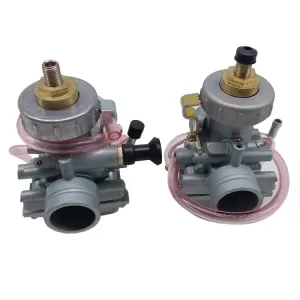
Carburetor For Yamaha YFZ 350 Banshee
-
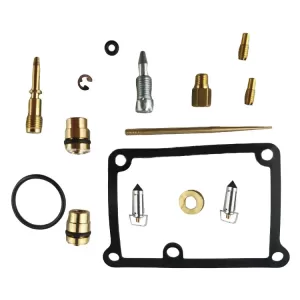
Carburetor Repair Kit For Yamaha YFZ 350 Banshee
-
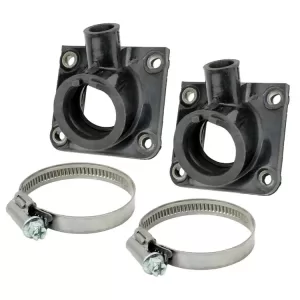
Carburetor intake manifold For Yamaha YFZ 350 Banshee
-
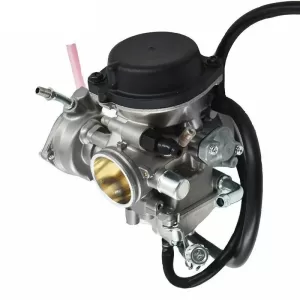
Carburetor For Suzuki LTZ 400
-

Carburetor For Yamaha Honda TRX650
-
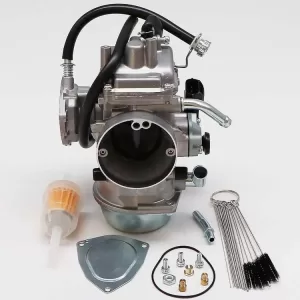
Carburetor For Yamaha YFZ450
-
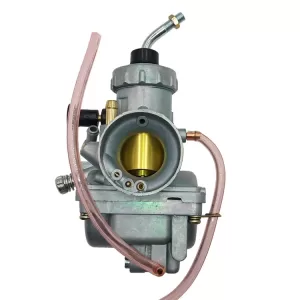
Blaster200 OEM Carburetor For Yamaha YFS 200 Blaster
-
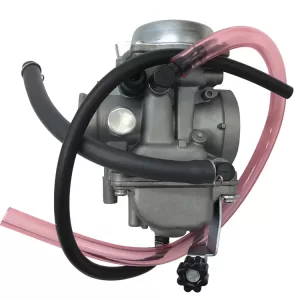
Carburetor For Kawasaki KLF 300
-
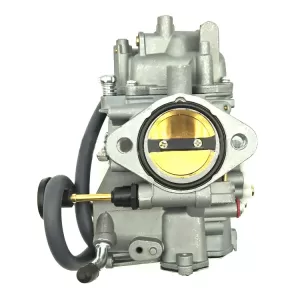
Yamaha Warrior 350 Carburetor
-

ATV Carburetor For Polaris Predator 500
-
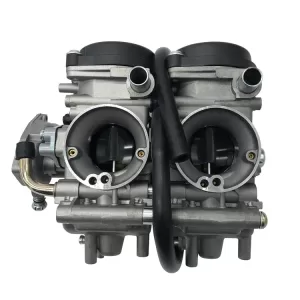
Raptor 660 Carburetor For Yamaha YFM660 Raptor
-
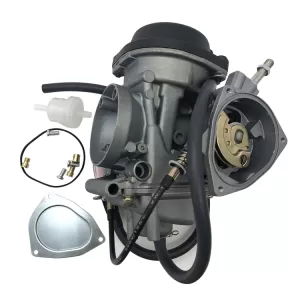
Kawasaki KFX 400 Carburetor
-
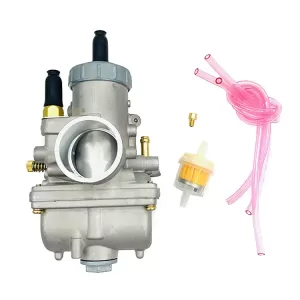
Polaris Xpress400 Xplorer 400L Carburetor
FAQ About ATV Carburetors
The carburetor in a motorcycle is also a precision mechanical device. Its main function is to inhale air flow energy so that gasoline can be atomized. The main purpose is to match the corresponding concentration according to the needs of the engine’s working status, so that the corresponding mixture can be output. It can make the mixture more uniform and ensure better fuel atomization in the engine. It is convenient to start the engine normally and ensure the operation of the engine.
The main job of the carburetor is to ensure the normal operation of the engine. Once the mixture is too rich or too thin, it will affect the engine. The mixing ratio of gasoline and air can be adjusted to ensure a uniform mixture ratio. Moreover, the fuel consumption and acceleration of the engine are related to the carburetor, and the carburetor will also affect the working performance of the engine.
Both the carburetor and the electronically controlled fuel injection system are fuel supply devices in motorcycle engines. The biggest difference is that the carburetor has already set the mixing ratio of fuel and air when leaving the factory. The electronically controlled fuel injection system can adjust the Flexibly control the mixing ratio of fuel and air under various conditions.
1. Carburetor
The function of the carburetor is to use the vacuum negative pressure generated by the engine to supply a certain proportion of gasoline and air mixture to the combustion chamber of the engine. The complete combustion of one kilogram of gasoline requires about 15 kilograms of air, so the mixing of oil and gas is very important.
In the middle of the channel through which the carburetor takes in air is a narrow throat, which accelerates the air taken in by the engine, sucks out the fuel in the thin tube, atomizes it, and mixes it with the air. The carburetor usually includes a fuel chamber, a choke, an idle orifice, a main orifice, an air throttle pipe and an accelerator pump.
Although the structure of the carburetor is simple, durable and low-cost, its fuel supply accuracy can no longer meet today’s stringent environmental regulations, so carburetors are no longer visible in new cars in recent years. But it’s still very common on cheap new cars.
Although the carburetor engine can meet the fuel supply of motorcycles, the control is not precise enough, which not only causes a waste of fuel, but also causes environmental pollution.
Carburetors are replaced by electronically controlled fuel injection technology (referred to as electronic injection) on mid- to high-end motorcycles. However, due to issues such as volume, technology, and cost, carburetors are not used on mid- to low-end motorcycles and various general machinery. Will use it for a long time.
2. Electronically controlled fuel injection system
Electronically controlled fuel injection system (abbreviation). The advantage of electronically controlled fuel injection engines over carburetor-type engines is that the computer system is used as the control core and based on various data fed back by sensors, the engine can operate under various working conditions. Get the best mixture to produce maximum power output.
The electronic injection device plays the role of automatically controlling the mixing ratio of fuel and air. According to the different driving conditions of motorcycles such as starting, idling, accelerating, braking, etc., the corresponding fuel injection amount and the best time of fuel injection are determined by the cooperation of sensors and computers. This not only saves fuel consumption, but also adjusts the combustible mixture air. Starting from the fuel ratio, exhaust emissions are fundamentally improved.
The electronically controlled fuel injection system makes gasoline burn more fully and thoroughly. In theory, it can increase engine output by about 5%, save fuel by 5% to 20%, and effectively control the emission of harmful gases. As the country promulgates National 4 emission standards, electronically injected vehicles will replace carburetor vehicles. Of course, the motorcycle itself has low fuel consumption and the fuel saved is limited.
The motorcycle electronic control system mainly consists of four parts: sensors, ECU computers, actuators, communication lines, etc.
The sensors used in motorcycles mainly include: engine temperature (water temperature) sensor, intake air temperature (environment) sensor, intake air pressure sensor, throttle position sensor, crankshaft position sensor, vehicle speed sensor, dump sensor, oxygen sensor, etc. The sensor transmits the collected information to the ECU (computer), which analyzes and calculates it, and then issues instructions to the actuators to control the work of various actuators.
3. Summary
EFI motorcycles are fuel-efficient, stable and efficient, making it easier to start the motorcycle under various external conditions. More importantly, the electronic injection system allows the fuel to be fully burned and has less impact on the environment.
The disadvantage of EFI models is that the maintenance cost is generally higher than that of carburetor models, and because of its design, maintenance is also very troublesome. If you are not careful, you may cause damage to the motorcycle. Smaller repair shops may not Have repair skills.
Problems with the carburetor will cause many symptoms, such as unstable idling, difficulty starting, weak acceleration, increased fuel consumption, easy stalling, exhaust pipe explosion, carburetor oil leakage, etc. The carburetor is a precision mechanical device that mixes a certain proportion of gasoline and air through vacuum. In the engine, the carburetor plays an important role as the “heart”. The entire device should include a starting device, an acceleration device, a medium load device, a full load device and an idle device.
1. Many times carburetor problems are caused by dust particles, gasoline gel and other impurities in the carburetor nozzle. The main nozzle of the carburetor is particularly easy to be blocked by impurities and colloids, and most of them can be solved through cleaning and debugging.
2. Mixed oil is used. If it is not used for a long time, the oil will precipitate in the oil passage and block the oil passage, causing damage to the carburetor.
3. There is a problem with the carburetor seal.


